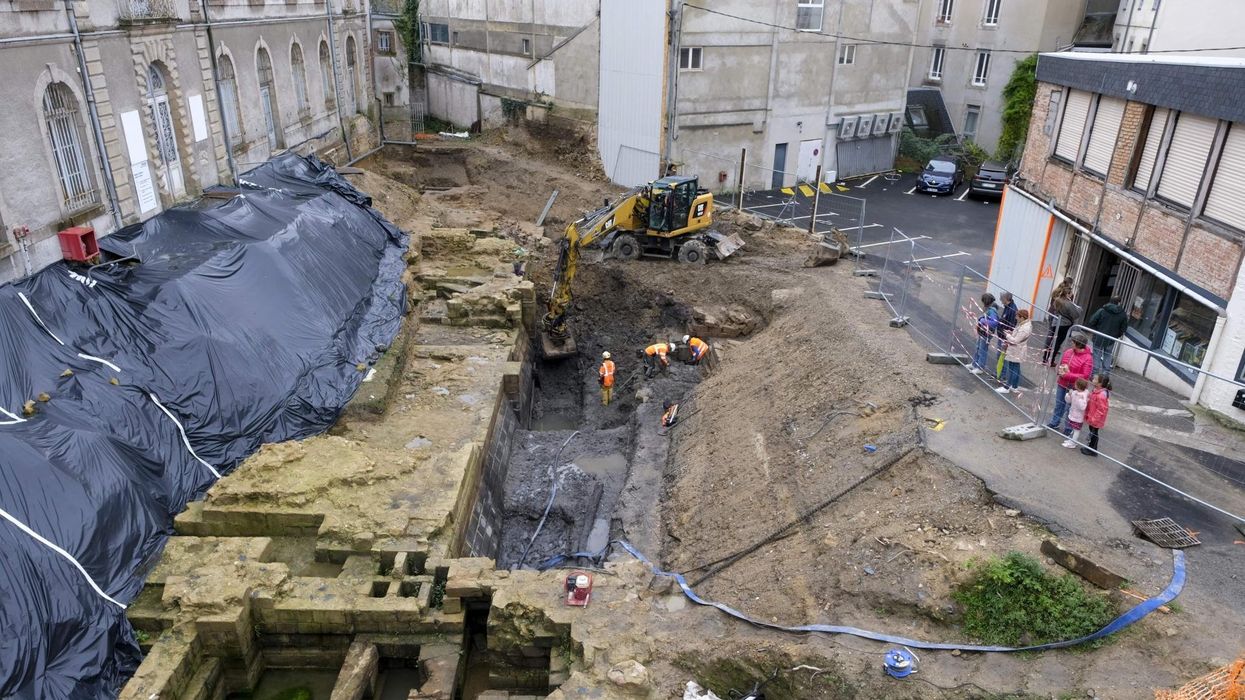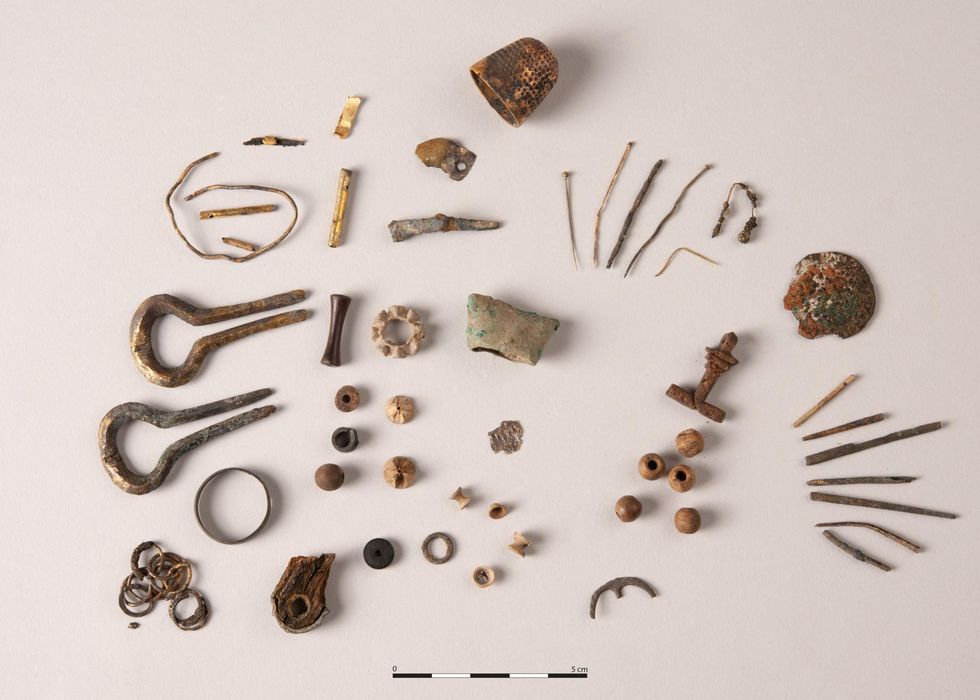Sinead Butler
Mar 07, 2025

A 640-year-old castle discovered under a hotel in France
Emmanuelle Collado, Inrap
A 14th-century castle has been discovered by archaeologists under a hotel in Vannes, France.
Situated under the courtyard of Hotel Lagorce, the 640-year-old castle has been confirmed as the Château de l’Hermine and was built back in the 1380s by John IV the Conqueror.
Between the spring and autumn of last year, the excavations were carried out by the National Institute for Preventive Archaeological Research (INRAP).
“The excavation revealed little by little the plan of the ground floor: the ducal house 42 meters long and 17 meters wide (out of work), is endowed with walls of an exceptional thickness," INRAP explained in a press release translated from French.
A ducal house is the place where a duke like John IV would reside.
Despite its age, the castle remains are well preserved, much to the surprise of archaeologists.
“Directly bordered by a moat, it is flanked to the west of what one can call a ‘square tower.’”
Researchers noted how well the construction of the castle was managed when it was built all those years ago.

“The homogeneity of the materials used for the construction of the castle and the standardization of the modules show a mastery of the management of the site throughout the operating chain, from the extraction of stone to its implementation,” the INRAP said.
“The construction… took place in a single phase, which testifies to the importance of the financial and human resources used," it continued: “The remains indicate that John IV knew how to surround himself with the best engineers and craftsmen of their time.”
Furthermore, "several staircases" were revealed which included a "remarkably preserved ceremonial staircase, presenting a decorated core and three steps, but also a cushioned window (a bench in the embrasure)."
It is thought the castle had three or four floors as researchers found "a set of latrines and drainage pipes relating to the upper level."
A number of objects "linked to the daily life of the castle" were also discovered and this consisted of coins, jewellery, cooking utensils (pots, frying pans, frying pans, etc.) that date back 15th and 16th centuries.

Due to the humidity of the environment, wooden items such as bowls, and fragments of barrels remained well preserved.
“In addition, archaeologists conducted a deep survey in the moat,” INRAP explained. “From this very wet material, they extracted rich furniture," along with items like pins, clothing or shoe buckles, slabs covered with graffiti, etc.
The Château de l'Hermine was one of Duke Jean IV's favourite residences and was "used intensively" for just under a century but later fell out of favour in the 1470s as François II preferred Nantes, before being completely abandoned in the 17th and 18th centuries.
This article was originally published on 3 March 2024
How to join the indy100's free WhatsApp channel
Sign up to our free indy100 weekly newsletter
Have your say in our news democracy. Click the upvote icon at the top of the page to help raise this article through the indy100 rankings.
Top 100
The Conversation (0)













